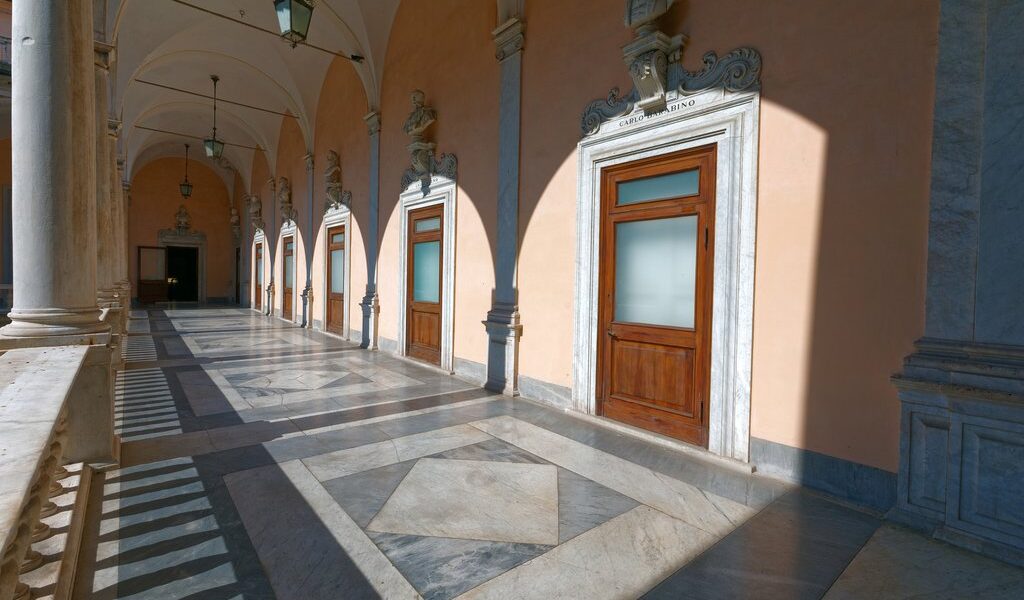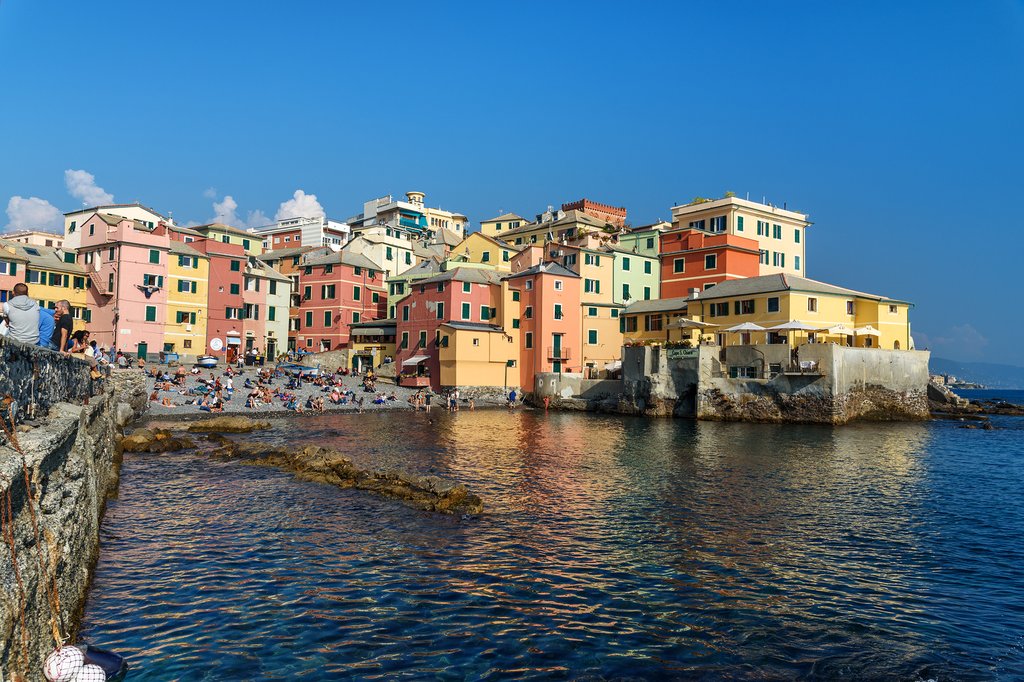
Capital of Italy’s Ligurian region, the port city of Genoa seems surprisingly off the tourist trail, despite its cache of grand palaces and exceptional street food. Explore the atmospheric alleys and piazzas of the Old Town, visit its huge aquarium or just stroll its reinvigorated waterfront and become an expert on everything pesto. Learn more about what to do, see, and eat in Genoa below.
## Unveiling Genoa: A Deep Dive into Liguria’s Captivating Capital
Genoa, often overlooked in favor of its more glamorous Italian counterparts, is a vibrant and multifaceted city waiting to be discovered. It stands as Italy’s busiest port, a testament to its centuries-old maritime heritage. Beyond the bustling harbor, Genoa boasts one of Italy’s most intriguing and intricate old towns, a labyrinth of narrow streets and hidden squares teeming with history and character. The city’s culinary scene is equally compelling, centered around the freshest seafood and the incredibly addictive *focaccia*, a far cry from the bland, spongy imitations found elsewhere. Genoa’s architectural grandeur is on par with any major Italian city, showcased in its opulent late-Renaissance palaces and magnificent churches, all enjoyed with significantly fewer crowds.
The city’s profound connection to the sea is celebrated annually during the **Regata delle Antiche Repubbliche Marinare**, a thrilling rowing competition held every June. This event sees crews from Genoa’s historical maritime rivals, **Amalfi**, **Pisa**, and **Venice**, compete for glory, with the hosting duties rotating each year. Furthermore, in September, the **Millevele**, translating to “Thousand Sails,” transforms the bay of Genoa into a breathtaking spectacle, as yachts from across the globe converge, creating a sea of white against the Ligurian coastline. This event is a must-see for sailing enthusiasts and offers a fantastic opportunity to witness the city’s maritime spirit firsthand.
## Crafting Your Genovese Adventure
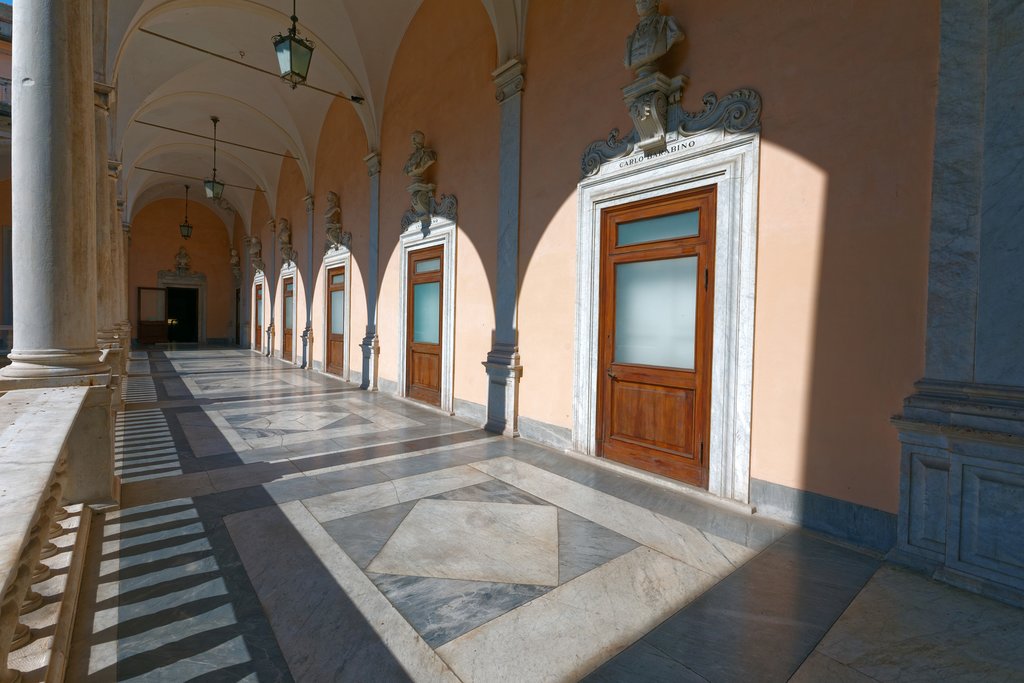
For those with limited time, even a single day in Genoa can offer a tantalizing glimpse into its rich tapestry. The heart of the experience should undoubtedly be the Old Town. Begin your exploration by admiring the majestic palaces that line **Via Garibaldi**, a street renowned for its architectural splendor. It’s highly recommended to venture inside at least one of these palatial residences, such as the **Palazzo Rosso**, to fully appreciate their artistic and historical significance. Dedicate ample time to getting lost in the charming alleys, known as *caruggi*, and the quaint *piazzas* that define the Old Town’s character. Take a break from your wanderings to savor the atmosphere and indulge in a coffee and a delectable pastry at either **Caffè degli Specchi** or **Fratelli Klainguti**, two iconic establishments that have served locals and visitors alike for generations.
A visit to the magnificent cathedral is essential. Afterward, make your way down to the revitalized old port area. Here, you can immerse yourself in the underwater world at the impressive aquarium, or delve deeper into Genoa’s maritime past at the **Maritime Museum**. Ascend to the top of the Bigo elevator for panoramic views of the city and the Ligurian Sea. As evening approaches, be sure to treat yourself to a quintessential Genovese dish – pesto, prepared with fresh basil, pine nuts, garlic, Parmesan cheese, and olive oil.
If you have the luxury of two additional days, you can embark on a more comprehensive exploration of Genoa. Dedicate time to fully appreciating the palaces of Via Garibaldi, delving into their art collections and architectural details. Explore the **Palazzo Ducale**, a historical landmark that hosts captivating exhibitions. Make your way to **Castello d’Albertis**, a unique museum housed in a castle with a fascinating collection of artifacts. Finally, enjoy a refreshing stroll along the scenic promenade to **Boccadasse**, a picturesque fishing village that offers a glimpse into Liguria’s coastal charm.
### Optimal Timing for Your Visit
Genoa enjoys a pleasant Mediterranean climate, characterized by warm, dry summers. However, the winters can bring cooler temperatures, so be sure to pack accordingly. Rainfall is typically heaviest during the months of October and November. The most favorable months for a visit are May, June, and September, when the weather is ideal for exploring the city’s outdoor attractions. The city is at its busiest during the summer months, particularly in August, so plan ahead to avoid crowds.
### Navigating Genoa: Arrival and Transportation
Genoa is easily accessible by air, with Genoa Airport (Aeroporto Cristoforo Colombo) serving flights to and from most major European capitals. The airport is conveniently located just four miles west of the city center. Travelers from North America will typically need to connect through major European hubs such as Rome, Paris, Amsterdam, or Frankfurt.
The city is also well-connected by train, with frequent services from Rome, Turin, Bologna, Florence, and other cities along the Italian Riviera. Trains arrive at two main stations: Stazione Principe (Genova P.P.), situated near the Old Town on Piazza Acquaverde, and Stazione Brignole (Genova BR.), located in the modern city on Piazza Verdi. It’s essential to confirm your train’s arrival and departure station in advance.
Driving to Genoa is a viable option, although navigating the city center can be challenging due to its narrow streets and traffic restrictions. Parking is generally easier to find around the port and the outskirts of the Old Town. However, be aware that the historic center is designated as a “Limited Traffic Zone” (ZTL), and driving within this area is restricted.
Ferries connect Genoa to various destinations, including Barcelona, Sardinia, and Sicily. Most ferries depart from the Stazione Marittima on Via Marina D’Italia, which is a short five-minute walk south of Stazione Principe.
The most rewarding way to experience Genoa is on foot, allowing you to fully immerse yourself in the city’s atmosphere and discover its hidden gems. However, buses and a small subway system are available for longer distances. Taxis are readily available at night, particularly through Radio Taxi.
### Unlocking Savings with Genoa Passes
For those planning to visit multiple museums, the **Card Musei** (“museum card”) offers excellent value. It provides free or discounted entry to 22 museums, including all the principal palaces. The 24-hour card costs Euros 12, or Euros 15 with free bus travel. The most economical option is the 48-hour card, priced at Euros 20 or Euros 25 with bus access. The pass can be purchased at any museum or tourist office.
## Unveiling Genoa’s Must-See Attractions
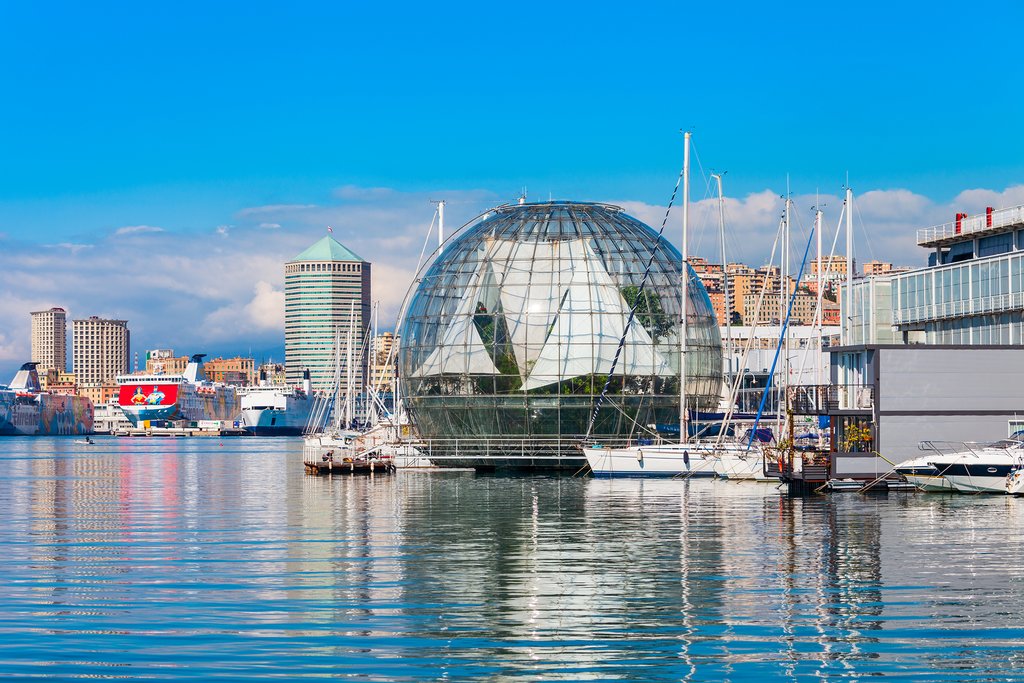
Genoa stretches for 19 miles along the Ligurian coast, its neighborhoods nestled in valleys and clinging to the slopes of the Apennine Mountains. The majority of the city’s key attractions are concentrated within the **Centro Storico** (Old Town), a captivating blend of Renaissance palaces, historic medieval buildings, charming piazzas, and narrow alleys (*caruggi*). Keep in mind that most museums are closed on Mondays, as are some attractions in the Old Port and several of the city’s restaurants. Additionally, many stores typically close on Monday mornings or Wednesday afternoons.
### Exploring the Centro Storico (Old Town)
**Via Garibaldi**, also known as Gia Strada Nuova, serves as the northern boundary of the Old Town and is an ideal starting point for your exploration. This street is renowned for its stunning mansions, which are accessible through the **Musei di Strada Nuova** umbrella. Among these is the magnificent **Palazzo Bianco** (White Palace), home to a remarkable collection of paintings, including *Portrait of a Lady* by Lucas Cranach the Elder.
The **Palazzo Rosso** (Red Palace) showcases prints, drawings, and impressive 17th-century frescoes. The **Palazzo Doria Tursi** houses a shrine-like room dedicated to the “Guarneri del Gesù,” the violin of the celebrated local violinist Niccolò Paganini. Nearby, on Piazza Pellicceria, lies the **Galleria Nazionale di Palazzo Spinola**, a stunning example of the opulent lifestyle enjoyed by Genovese aristocrats in the 18th century, with its gilded rooms filled with artistic treasures.
Genoa’s **Cattedrale di San Lorenzo**, distinguished by its striking black-and-white-striped 12th-century façade, is located in the heart of the Old Town. Inside, the Cappella di San Giovanni is said to contain relics of John the Baptist. Another notable landmark is the stately **Palazzo Ducale** in Piazza Giacomo Matteotti, the former Doge’s Palace, now used for special exhibitions. History enthusiasts should visit the **Museo del Risorgimento** (Via Lomellini 11), which chronicles Genoa’s role in Italy’s reunification movement, housed in the birthplace of revolutionary Giuseppe Mazzini in 1805.
### Discovering the Old Port (Porto Antico)
The old port area has undergone extensive regeneration in recent decades, with local architect Renzo Piano playing a pivotal role. Piano’s most prominent creation is the **Bigo**, a towering, moveable sculpture reminiscent of a shipping crane, featuring a panoramic lift that ascends to 130 feet above the port, offering breathtaking views.
The area is also home to the **Acquario di Genova** (Aquarium of Genoa), the largest in Europe, a branch of the gourmet food emporium **Eataly**, the **Vascello Neptune**, a replica of a 17th-century Spanish galleon, and a small slice of tropical forest within Renzo Piano’s remarkable glass globe, the **Biosphere** (Biosfera). Be sure to admire the brightly frescoed **Palazzo San Giorgio**, where Marco Polo was supposedly imprisoned (and where he recounted his *Travels*) during a war with Venice. Don’t miss the **Genoa Museum**, dedicated to the local soccer team.
Further along the waterfront, the innovative **Galata Museo del Mare** (Museum of the Seas) provides a comprehensive overview of Genoa’s long and eventful maritime history, including a full-scale reproduction of a Genovese “attack ship.” Across the harbor stands the iconic **Lanterna**, the lighthouse of Genoa. Built in 1543, it stands 253 feet tall, although only the first terrace is accessible to visitors.
### Exploring the New Town (San Vicenzo)
The Old Town was once protected by walls and medieval gates, with the twin-towered **Porta Soprana** being one of the most impressive remaining examples. The gate faces **Piazza Dante** and the newer section of the city. Just below the gate lies “Christopher Columbus’ House,” believed to be where Columbus resided as a child (the existing structure is an 18th-century reconstruction). Adjacent to it is the atmospheric ruin of St Andrew’s cloister. To the north is Via XX Settembre, constructed between 1892 and 1924, lined with upscale shops, arcades, and mosaic sidewalks. Halfway along this street is the sprawling **Mercato Orientale**, Genoa’s vibrant indoor food market since 1899.
### Visiting Castello d’Albertis
Perched high above the Old Town, offering magnificent city views, the unique **Castello D’Albertis** was completed in 1892 as the residence of sea captain Enrico Alberto d’Albertis. Constructed in the style of an Italian Gothic castle, it now houses the **Museum of World Cultures**, exhibiting ethnographic artifacts from around the world.
### Escaping to Boccadasse
Located approximately 4 miles east of the Old Town along the coast (at the end of the Corso Italia promenade), the charming fishing village of **Boccadasse** is a popular destination for a half-day excursion. Its colorful boats and houses are reminiscent of the Cinque Terre villages further south. The restaurants in Boccadasse are renowned for their incredibly fresh seafood, and the Corso Italia promenade is lined with local gelato vendors.
## Selecting Your Accommodation
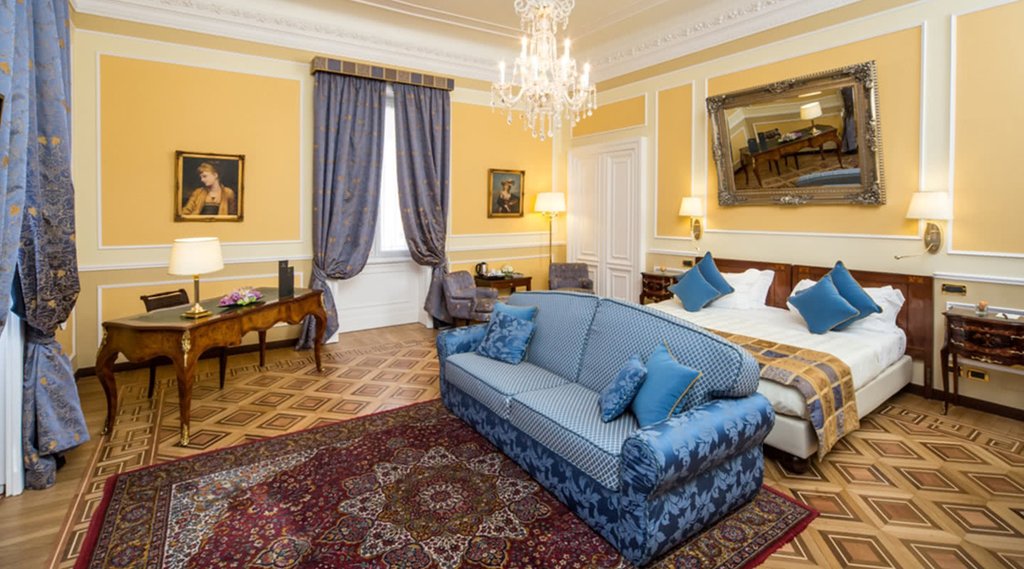
Hotel bookings in Genoa can be particularly heavy during the **Millevele** event (typically in September), so it’s advisable to check for other scheduled events before making your travel plans. If you prefer a more authentic experience, consider renting a self-catering apartment. While many apartments can be found on various booking websites, **Virginia’s Rooms**, within walking distance of the Old Town at Via Nino Bixio 4b, offers a stylish option.
Genoa boasts several grand old hotels for those seeking luxury accommodations. Alfred Hitchcock was a devoted admirer of the opulent **Hotel Bristol Palace** (Via XX Settembre, 35), an Art Nouveau treasure that first opened its doors in 1905. The **Grand Hotel Savoia** (Via Arsenale di Terra 5, opposite the station) dates back to 1897 and exudes Belle Epoque elegance. **NH Collection Genova Marina** is another upscale hotel, perfectly situated on the waterfront in the heart of town (Molo Ponte Calvi 5).
For more contemporary options, the **Best Western Hotel Portico Antico** (Via Al Ponte Calvi, 5) provides good value and a central location, while the minimalist **Hotel Nologo** (Viale Sauli 5) offers budget-friendly rates and musically themed rooms. Hostels are abundant in Genoa, with **Ostellin Genova** (Vico dei Parmigiani 1-3) providing friendly accommodation in the Old Town.
## Indulging in Genovese Cuisine
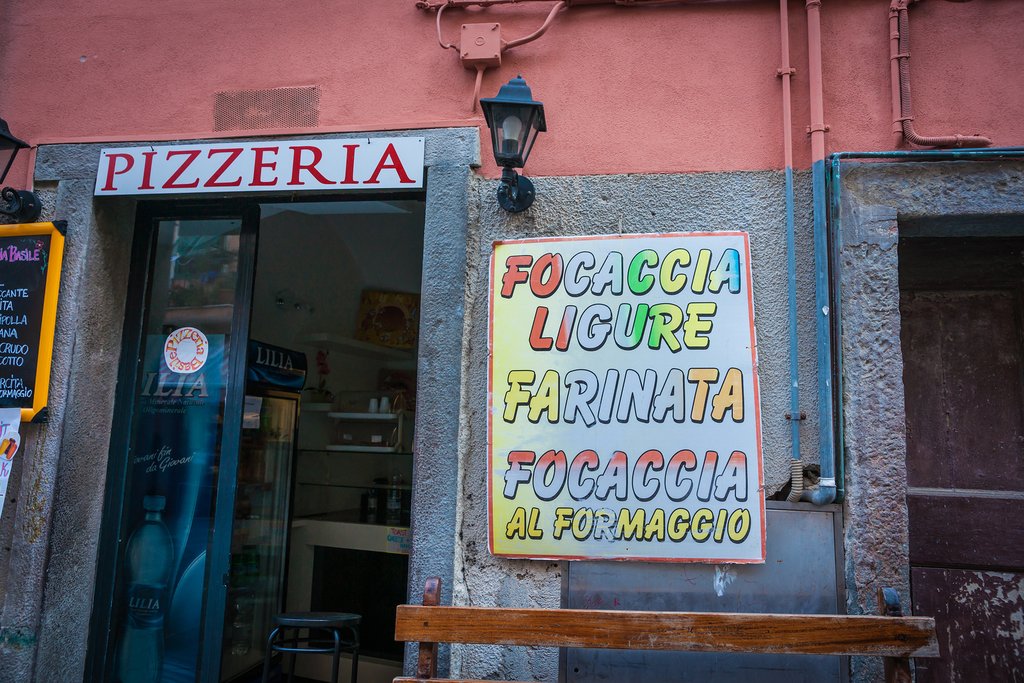
You’ll encounter take-out shops selling *focaccia*, the local specialty, throughout Genoa. This thick, crispy-skinned flatbread, seasoned with salt and olive oil, is often topped with cheese, onions, vegetables, or prosciutto. Another local favorite is *farinata*, a surprisingly delicious chickpea fritter baked like a mini pizza.
Small, unassuming establishments in the old port area offer fried fresh seafood every evening. Don’t miss the historic ambiance of **Caffè degli Specchi** (Salita Pollaiuoli 43/R), ideal for breakfast, coffee, or cake.
For a sit-down meal, **I Tre Merli** (Calata Cattaneo 17) in the old port is a popular choice, known for its Ligurian seafood and beautiful sea views. Within the Old Town, the unpretentious **Trattoria da Maria** (Vico Testadoro 14r) is a Genovese institution. The handwritten menu changes daily, but often includes stuffed anchovies and pesto, two of Liguria’s most celebrated specialties.
For a special occasion, consider **Zeffirino** (Via XX Settembre 20), an extravagant restaurant offering exceptional wines and delectable dishes like *lasagna Genovese*, lobster linguini, and some of the finest pesto in Italy. Frank Sinatra was such a fan that he had their pesto sauce shipped to him in the USA every week. Save room for the handmade chocolates at **Romeo Viganotti**, located at Vico dei Castagna 14.
## Experiencing Genoa by Night
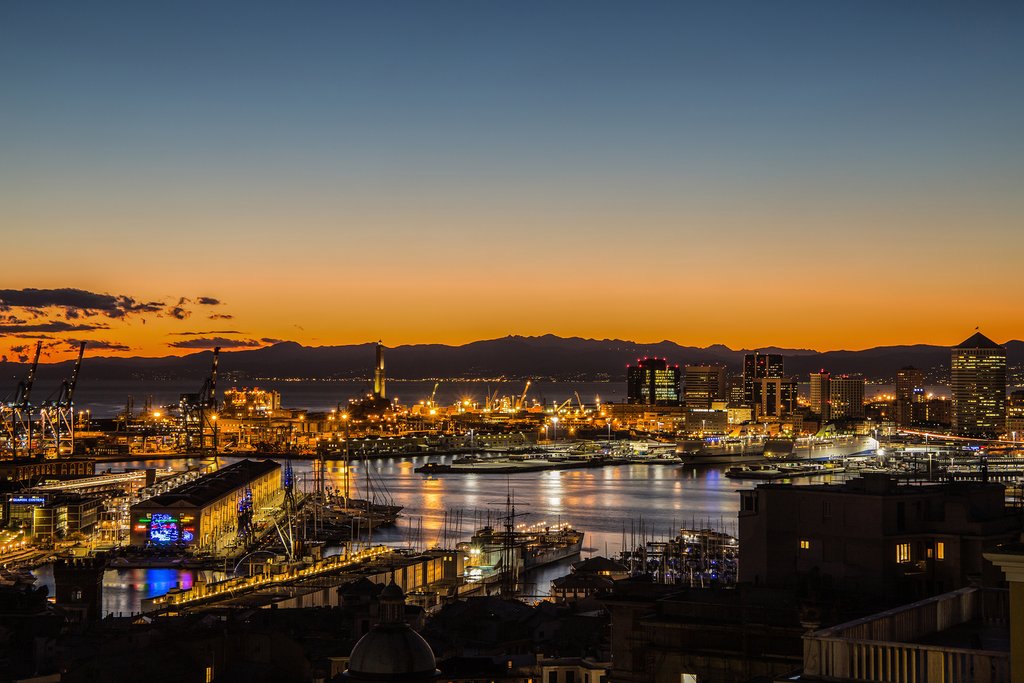
Begin your evening with an aperitif at **Caffè degli Specchi** or **Fratelli Klainguti** in Piazza di Soziglia, a charming old *pasticceria* established by Swiss brothers in 1828 (although it closes at 7:30 pm). For expertly crafted cocktails, visit **Les Rouges** (Piazza Campetto 8a).
To sample local Ligurian wines (typically white Pigatos and Vermentinos, as well as red Rossese), visit the cozy **Cantine Matteotti** (Archivolto Baliano 4-6/r). Located in a medieval palazzo, **La Bottega Del Conte** (48 Via delle Grazie) features live jazz performances.
Popular clubs include **Mako** at Corso Italia 28r, and **Estoril Beach Club** further along the coast at Corso Italia 7D, where the location and sea views compensate for the small dance floor and higher prices.
This expanded guide provides a much more comprehensive overview of Genoa, its history, attractions, and culinary delights. It aims to inspire travelers to delve deeper into this captivating city and experience all that it has to offer.
B-1336

